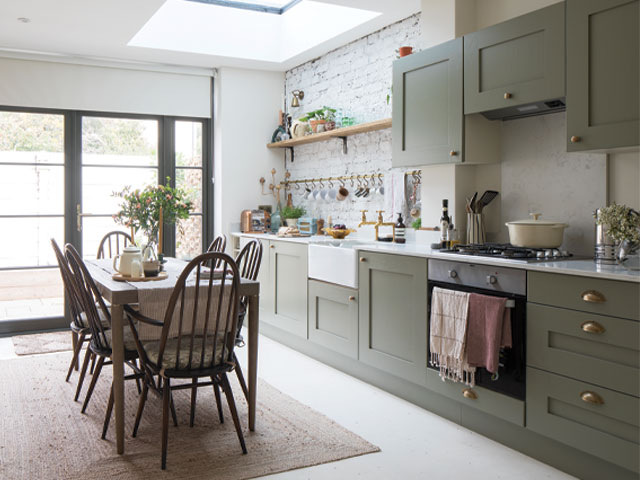
Creating a country kitchen in an urban home
Nicky Baker, who works for the Advertising Standards Authority, and her husband Tom, who runs his own animation company, remodelled their two-bedroom period property with a kitchen-diner extension as part of a wider home renovation.
When they bought their home in east London, it was a small, two-up two-down Victorian cottage. The kitchen was tiny and dark, with the main bathroom and stairs to the rooms upstairs leading off it. The house was charming, full of character and perfect for their needs at the time. But when the couple discovered they were expecting their daughter, Robyn, in 2019, they realised they would either have to move or extend.
[twenty20 img1=”19962″ img2=”19963″ offset=”0.5″ before=”Before” after=”After” hover=”true”]
How did you go about designing the kitchen-diner extension?
We contacted local firm ROAR Architects to reconfigure the space. The walls between the kitchen and bathroom were knocked through, then the back extended by 2.5m and squared off with the garden, to give us a much bigger kitchen-diner. Reversing the direction of the stairs to create a hallway and upstairs landing also freed up room for a comfy sofa, a hidden utility area and a downstairs toilet.
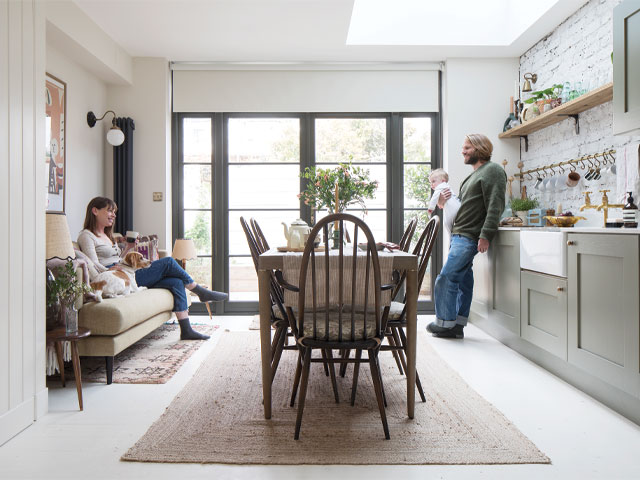
The couple have combined vintage and contemporary furniture to give the new room character and a lived-in feel. Photo: James French
What were your must have features?
We wanted well-made bespoke wooden cabinetry and to fill the space with as much natural light as possible. A huge feature skylight was fitted in the ceiling with industrial-style French doors, that almost span the width of the house.
What was your budget for the kitchen-diner extension?
As it was part of a full house renovation, we had to be really careful not to overspend and we had £10-£12k put by. Staying within that amount was challenging, inevitably things always end up costing more, but by cutting costs in some areas, we just about did it. The cabinetry was brilliant value for money and the quartz worktop was a cheaper and more practical solution to marble. We ended up choosing less expensive timber floorboards, and making the cupboards for our utility area from V-Groove MDF.
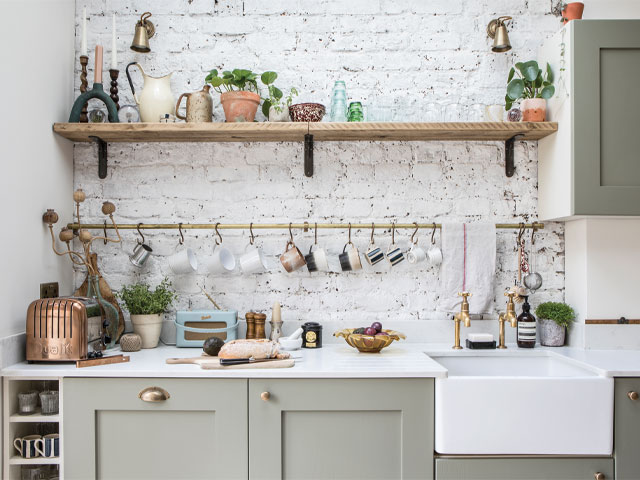
The cabinetry from DIY Kitchens was colour-matched to Farrow & Ball’s Treron Green, with a scaffold-board shelf and aged-brass wall rail from DeVOL adding to the country aesthetic. Photo: James French
Do you have a favourite feature?
Keeping the exposed brick on part of the kitchen wall wasn’t in our original plan but we couldn’t afford more wall cabinets, so whitewashed the bricks instead.
What lessons have you learned?
No matter how thorough your budget, always leave as much contingency as possible. Make sure that you know exactly what is, and what isn’t included in the costs given to you by your builder. All the little things add up, so don’t make assumptions, and don’t be afraid to ask lots of questions.
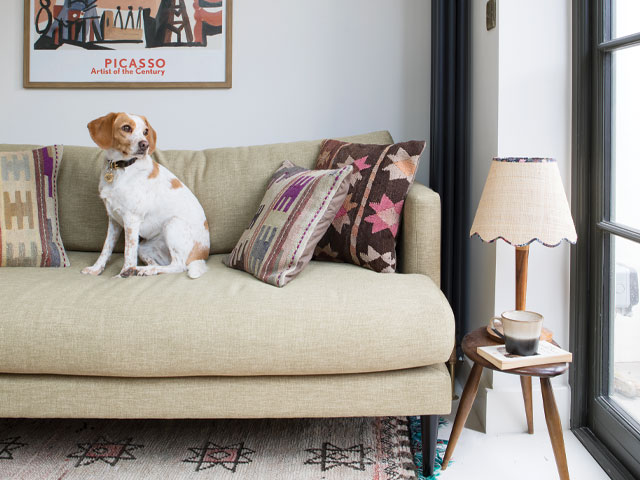
Soft colours in the rugs and cushions add warmth and character to the space. Photo: James French
How do you feel now the kitchen-diner extension is finished?
All the walls, woodwork and flooring, we painted in an antique cream, to keep the room feeling fresh and calm, and we have incorporated a blend of vintage and contemporary furniture and lighting, with soft colours in the rugs and cushions to add warmth and character to the space.
The extended kitchen-diner has completely transformed our everyday lives and is now where we spend most of our time together as a family, whether that is cooking, eating or just relaxing. It has a cosy lived-in feel, and it is hard to remember it any other way – we couldn’t be happier with the results!
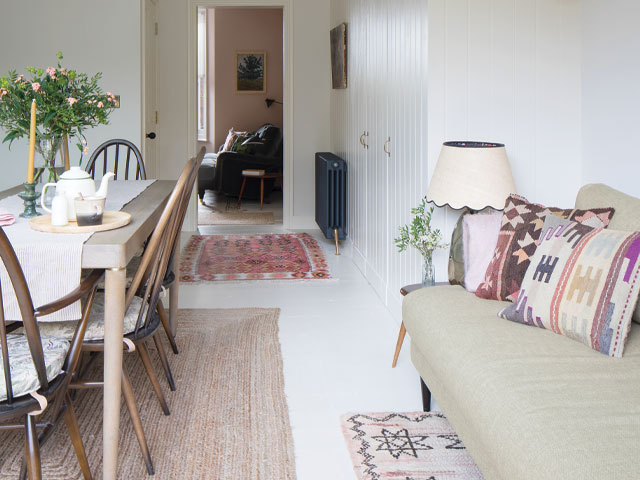
The new space was designed with a utility area hidden behind painted wood panelling and a nook to fit in a small sofa. Photo: James French
Project costs
- Cabinets £3,500
- Furniture £1,570
- Worktop £1,100
- Fixtures & fittings £620
- Appliances £500
- Lighting £480
- Sink & taps £460
- Flooring £300
- Paint £250
Total spend: £8,780




